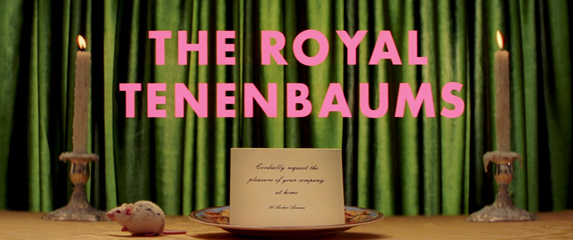
Since, Wes Anderson’s The Royal Tenenbaums has been around since 2001 and has been reviewed hundreds of times, I feel it is unnecessary to rehash the film’s plot-points. This review will instead focus on the elements and themes of this film and their execution that I find extraordinary – enough to constitute a rating of 10 out of 10.
The Royal Tenenbaums starts out with one of the greatest opening sequences – not since 8 1/2 have I been so enamored by a film’s opening. Meticulously constructed, all while being highly informative of the film’s various characters, but at the same time succinct, the opening lulls the viewer into a state of reposed reception while highlighting the family’s history and their numerous commendable achievements. All of this is, of course, narrated by Alec Baldwin, in what amounts to not only one of the greatest uses of narration in film, but also one of the greatest voice-over performances by an actor. I cannot imagine any other actor besides Alec Baldwin telling this particular story, especially to showcase the family’s copious strengths and accomplishments before descending into the failures and weaknesses, which the rest of film focuses on until the hopeful ending. Wes Anderson’s stylistic storytelling methods are reminiscent of story-time in school or your parents reading you a children’s book before bed. Think of an odd amalgamation of Richard Scarry, shoebox dioramas, the French New Wave, and Powell and Pressburger.
Another element featured in the opening sequence that I did not discuss is that of the music. From the use of ‘Hey Jude’, signaling there will be hope amid the sadness and failures to come, to the perfectly-suited ‘String Quartet in F major (Second Movement)’ by Maurice Ravel played during the character introductions. One also thinks of the use of Nico’s ‘These Days’ playing when Margot exits the bus, Elliot Smith’s ‘Needle in the Hay’ leading up to Richie’s suicide attempt (the attempt itself is inspired by Louis Malle’s The Fire Within) or ‘Judy Is a Punk’ by The Ramones during the recap of Margot’s varied and eclectic romantic relationships. Louis Malle’s influence surfaces again with the use of Erik Satie’s Gymnopédie No. 1, with Satie’s variations were used extensively in The Fire Within. Not only does The Royal Tenenbaums feature a splendid collection of popular music from the 1960s to the 1990s, but also a superb score composed by Mark Mothersbaugh.
The Royal Tenenbaums also features a menagerie of characters played brilliantly by all the actors and not just the main characters in the family, but also the peripheral characters. Fully fleshed out roles like Eli Cash, Raleigh St. Clair, Pagoda, Henry Sherman and, even, Dudley Heinsbergen, to an extent, are all given a fair amount of well-thought out development. The film not only focuses on the family dynamics of the Tenenbaum clan and their successes and failures but the film also spend a good deal of time focusing on the complex emotions of the supporting cast. Whether it be Eli Cash desperately wanting to be accepted as a part of the Tenenbaum family to getting little snippets of insight into the rich history that is the Pagoda (he truly is a complex man and assassin). All the actors involved give such nuanced performances, usually a combination of sadness, disappointment and doubt coupled with the perfect amount of humor and love. A delicate balance that keeps the film from tipping into an emotional-wringing drama nor to an all-out laugh riot, but somewhere in between.
Not only are Wes Anderson’s style and influences at their most endearing apex in The Royal Tenenbaums, but they just so happen to coalesce with great, noteworthy performances from all of the actors involved. All aspects of the film are so finely tuned and staged with OCD-like precision that subsequent viewings garner a bevy new discoveries. Anderson packs so much into one single frame it’s astonishing; he does it with such attention to detail, as if anything in the film, no matter how small, is paramount to the telling of the story. In 2001, Wes Anderson has created, not only, a wonderful and throughly enjoyable film filled with emotion and humor, but also a contemporary American classic in cinema.
Instead of a trailer…I leave you with this.






